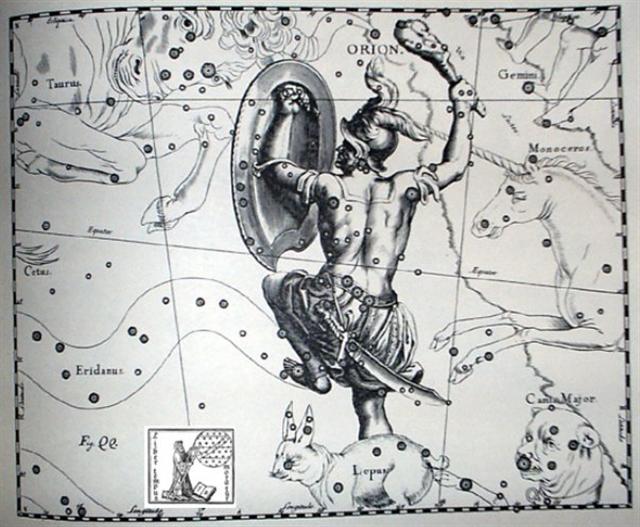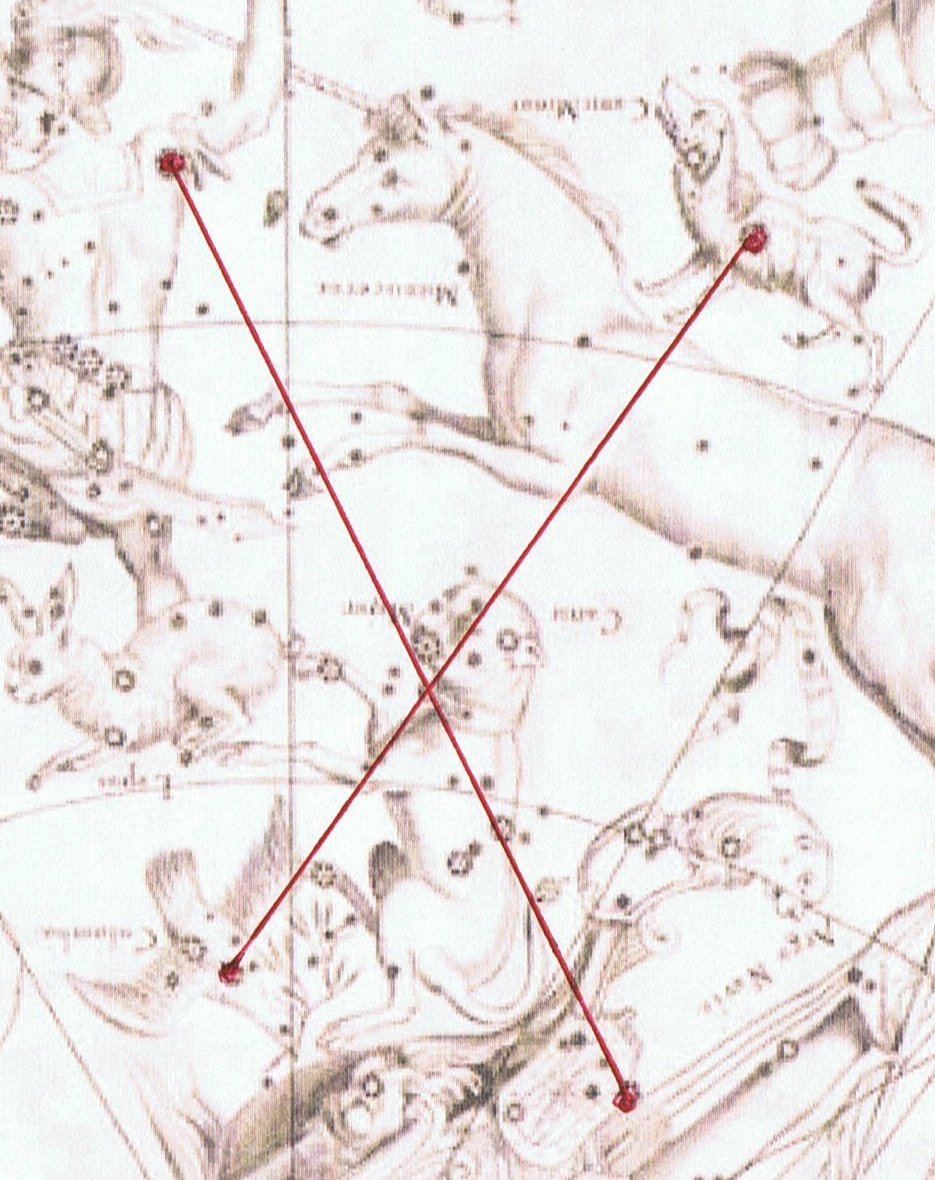5. I once again
had reason to mention
σ
Sagittarii at Egyptian
X:
... On the same page in Allen as his short sentence for Naos there is an interesting footnote which confirms I have guessed right as to the location of the Tree - it surely must stand in the delta (or anádelta) of the River (see at Nabla):
'Eridhu, or Eri-duga, the Holy City, Nunki, or Nunpe, one of the oldest cities in the world, even in ancient Babylonia, was that kingdom's flourishing port on the Persian Gulf, but, by the enchroachments of the delta, its site is now one hundred miles inland. In its vicinity the Babylonias located their sacred Tree of Life.'
... We here can understand why a delta is prior to land - it is not necessary to move in space further upland, it is only to sit down and wait for the developments of time. Why is modern man so preoccupied with travelling in space?
... In order to show where the Egyptian X is located I have copied a section of Hevelius' overview of the southern sky and drawn red lines between Betelgeuze and Naos respectively from Procyon to Phaet:
The great size of this X is on par with that of Argo Navis, and a great size is a Sign of importance.
|
According to this picture of
Hevelius it is in the armpit
of Orion we should find
Betelgeuze.
 |
 |
 |
 |
 |
|
Ga1-22 |
Ga1-23 |
Ga1-24 (25) |
Ga1-25 |
Ga1-26 (*90) |
|
γ Leporis (85.9) |
Saiph (86.5), ζ
Leporis (86.6) |
Wezn (87.6), δ
Leporis (87.7),
Betelgeuze (88.3) |
η Leporis (89.0),
Praja-pāti,
Menkalinan,
Mahashim, and γ
Columbae (89.3)
|
η Columbae (89.7), μ
Orionis (90.3) |
|
'June 15 |
'16 |
'17 (168) |
'18 |
'19 |
In the Egyptian X the center is at the head of Canis Major, where Sirius is a great source of light. The glyph at Betelgeuze has the sign atariki, which on the contrary has its head stretched high above the bottom 'X', a sign which could indicate emergence from darkness. Cfr at The Arm of Sun:
... Number
24 is easily
connected
with
midnight,
the time of
ghostly
apparitions.
But there is
nothing
ghostly in
atariki
in Ga1-24.
On the
contrary, he
is drawn
with
powerful
lines
without any
gaps in his
circumference
and he is
quite real.
 |
 |
|
Ga1-24 |
atariki |
The glyph is
so
distinctly
drawn that I
once decided
to choose it
as my
prototype
for the
atariki
glyph type.
A little dot
at right is
positioned
low in
comparison
with those
in
Ga1-20--21.
The location
of Ga1-24 is
also
distinct,
because it
comes in a
postion 'one
more'
related to a
cycle of 260
days:
|
There are
22 days from 'May 26 (146) to 'June 17
(168) and 200 glyphs from atariki in Ga1-24 to maitaki in Ga8-21, from one 'armpit' to the other.
 |
 |
 |
 |
 |
 |
| Ga8-21 (225) |
Ga8-22 |
Ga8-23 |
Ga8-24 |
Ga8-25 |
Ga8-26 |
| λ Lyrae (287.7), Ascella (287.9), Nunki (288.4) |
Manubrium (288.8), τ Sagittarii (289.4) |
ι Lyrae (289.5), Al Baldah (290.1) |
Aladfar (291.1) |
ψ Sagittarii (291.6), θ Lyrae (291.8) |
|
| 'May 26 (146) |
19h (289.2) |
'28 |
'29 |
'30 |
'31 |

The 'Armpit' seems to be
connected with the River
(the Milky Way), and I
recall how young Achilles
was strenghtened by a dip in Styx:
"Styx had
miraculous powers and could
make someone invulnerable.
According to one tradition,
Achilles was dipped in it in
his childhood, acquiring
invulnerability, with
exception of his heel, by
which his mother held him.
This is the source of the
expression Achilles'
heel, a metaphor for a
vulnerable spot."
(Wikipedia)
The pit (ana) from
where the 'right arm'
emerges could perhaps refer
to the place where Sun is
'refueling' - being warmed
up - in order to regain his
strength.
|







